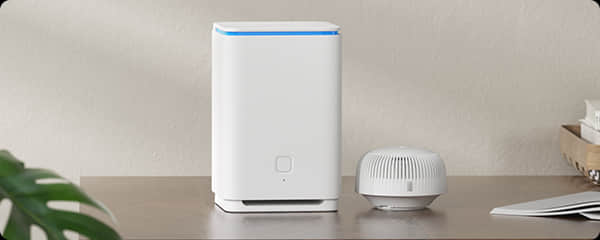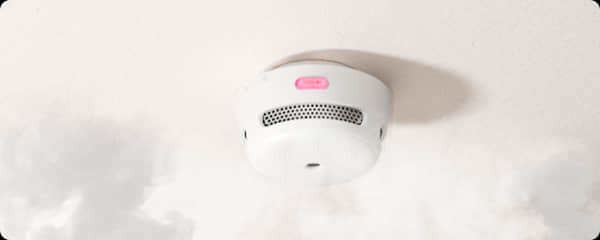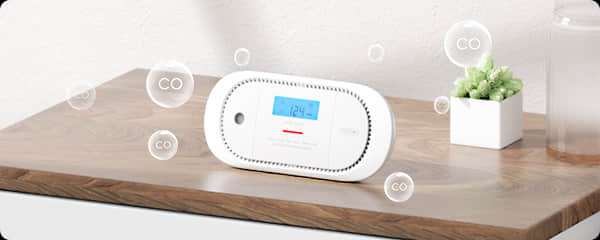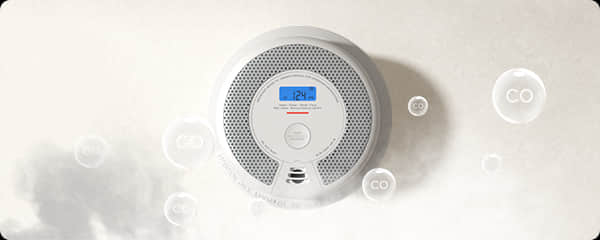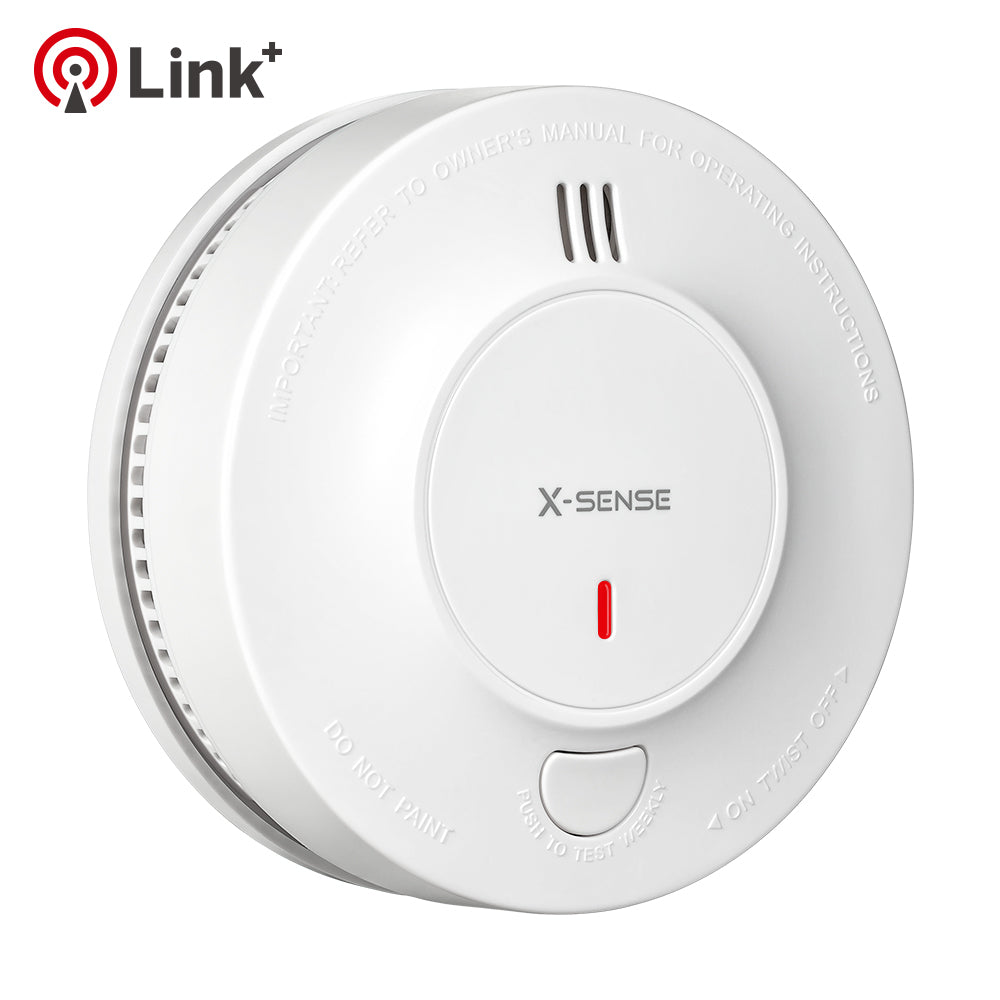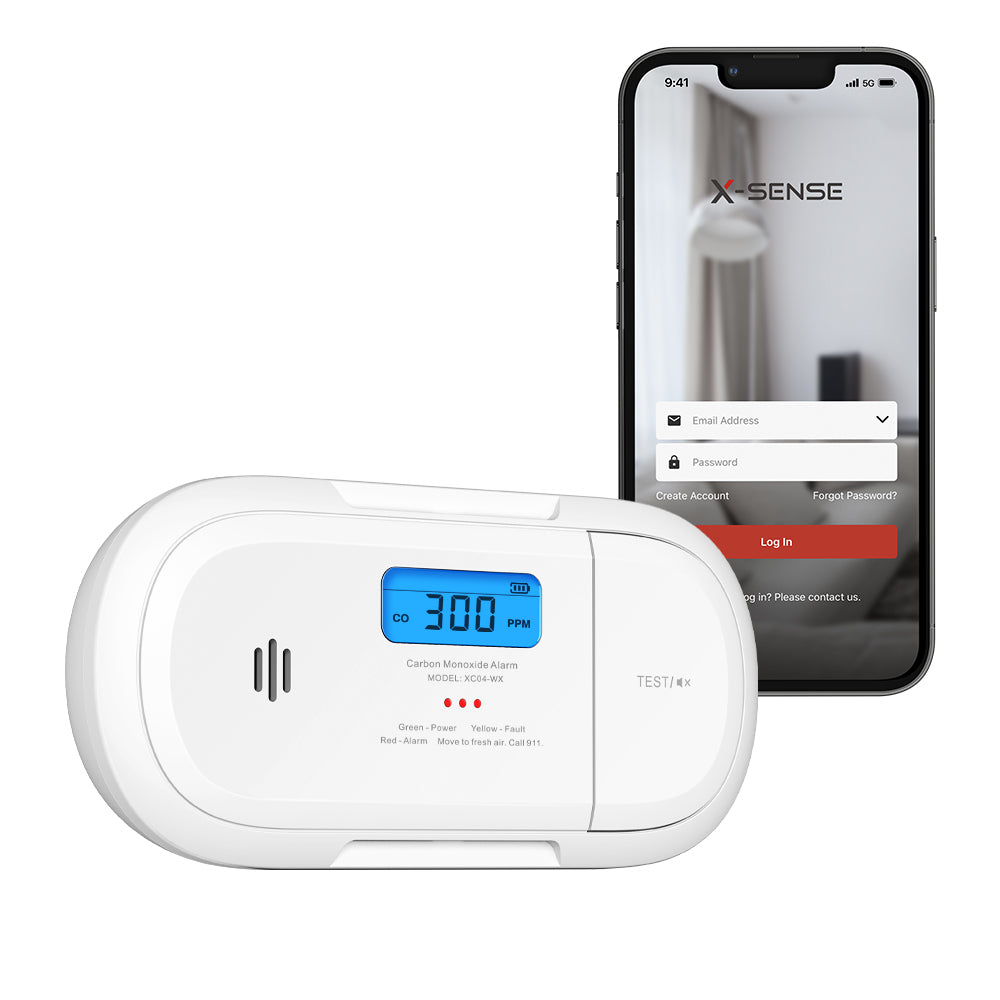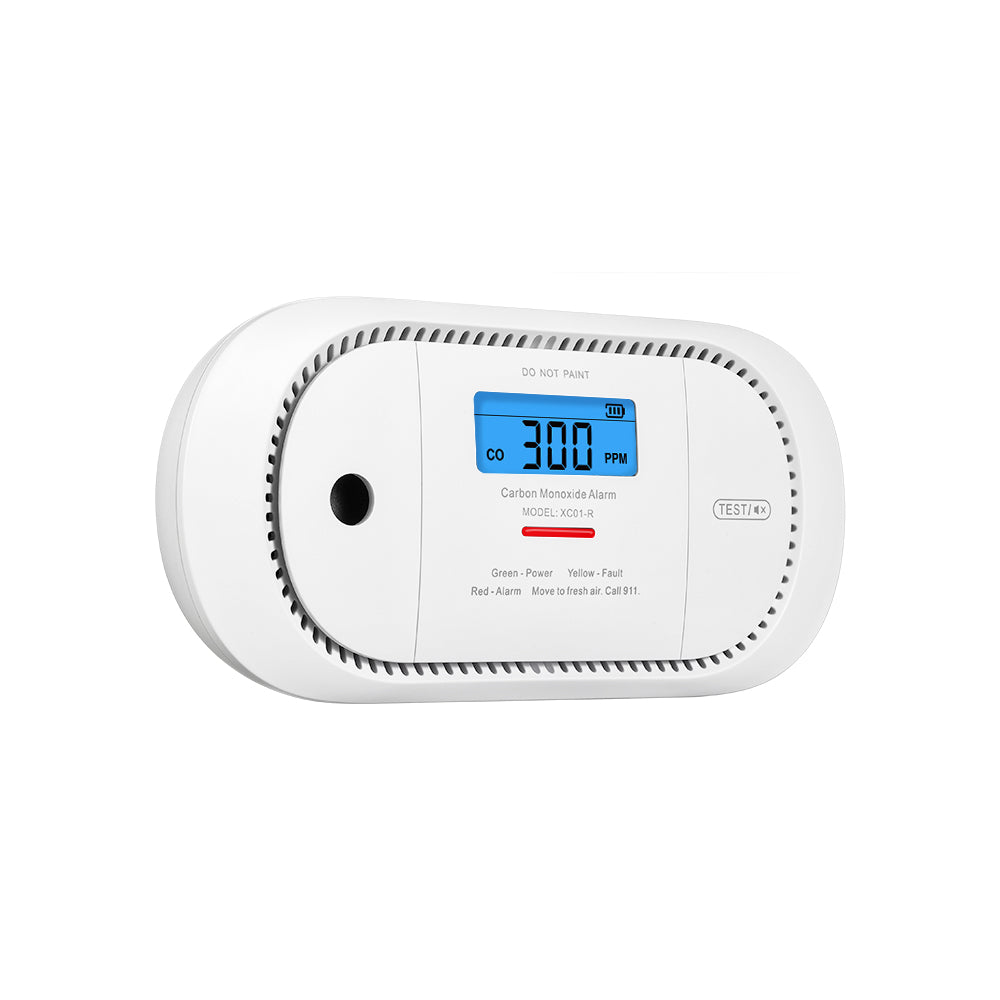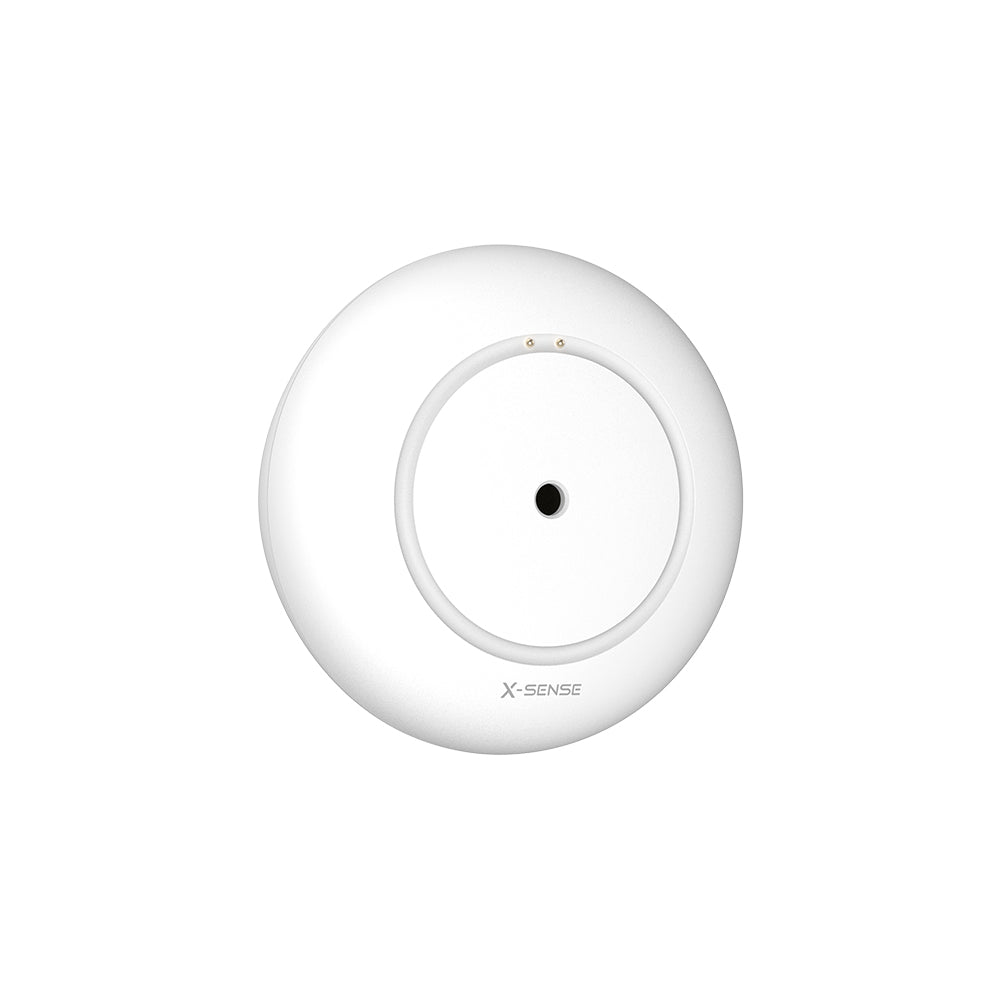Is Carbon Monoxide Heavier Than Air
Fri, Jun 12, 2020
Carbon Monoxide tends to be largely present in most households. It exists when there is burning of byproducts – which is likely used daily. The threat of carbon monoxide poisoning should not be taken lightly as it can have detrimental effects. When dangerous levels of concentration are reached, it can render a person unconscious since there is no oxygen being carried to the brain. Fatal cases could lead to death. By installing carbon monoxide alarms from trusted providers, we enhance our safety and security in these matters.
What Is Carbon Monoxide?
Carbon Monoxide is an odorless, colorless gas that is output from burning wood, propane, gasoline, charcoal, and others. Poisoning occurs when there is insufficient ventilation, letting carbon monoxide build up in the air. Since the gas is undetectable to humans, we can never be sure when the CO compound is in the air. When there is too much carbon monoxide inhaled, the compound depletes the oxygen levels in our bloodstream which can lead to coma and even death. These are serious conditions that are slow and painless. Thus, when you think that carbon monoxide may be present in the appliances or machines that are in the household – it is the best check on the airflow and ventilation of the area. This greatly reduces the threat of carbon monoxide builds up, reaching dangerous levels.
Does Carbon Monoxide Rise or Fall in the Air
1. Facts about Carbon Monoxide Poisoning
Carbon Monoxide is a serious matter to be dealt with. Despite the myths and misconceptions, below are facts that aim to correct any misunderstanding.
2. Colorless, tasteless and odorless
Carbon monoxide carries those three characteristics. They are particles that could be present in the air but could not be seen, smelled, or tasted. They cannot be detected by human senses which have earned it its name, “The Silent Killer.” Although there have been reports where people said they smelled carbon monoxide, they are referring to odor when combustion in byproducts occur. This is a distinct burning smell that is often present where carbon monoxide is. If you happen to experience these, take attention as these should be addressed as soon as possible.
3. Placement of detectors
Carbon monoxide is slightly less dense than air. It is measured with exactly 28 molar mass while the average air has 28.8 molar mass. The mass between the two is not too far which makes carbon monoxide evenly scattered with air particles. Given this, it does not completely guarantee that placing your carbon monoxide detectors on the ceiling will always be the best option.
Some may argue that the ceiling is the best position as it only seems logical that heat combustion is coupled with warm air. And warm air tends to be lighter – making it rise. This is a decent judgment and we are not saying that it is completely wrong. However, manufacturers would recommend placing them on different mounting locations between the wall and the ceiling where it is nearer to the heat source. That way, any leakage could easily be detected.
When you mount a carbon monoxide alarm, please also check the rules and guidelines that are defined for your area. Some may require that an alarm may need to be put outside each of every bedroom, near fuel-burning appliances, and more. These are additional considerations that you would need to know to be able to establish a safer environment.
4. CO can be deadly
Carbon Monoxide poisoning could lead to fatal conditions, even death. Since the majority of households still use fuel and fires for cooking, there is a high rate for carbon monoxide to build up. The way carbon monoxide poisoning works is that it takes a lot of oxygen from your body when it is inhaled, causing you to feel lightheaded, nauseous, and wanting to sleep. Depending on the level of exposure, carbon monoxide poisoning could render you in critical or deadly conditions.
5. Carbon monoxide symptoms and impact
Carbon monoxide poisoning is not the typical poisoning where you would see the body reacting actively to combat it. The effects are slow and could be undetected. As we mentioned prior, carbon monoxide poisoning depletes your body’s capability to carry oxygen from the bloodstream up to the brain. As it bonds with the blood cells in your body, it takes the O2 and instead creates HbCO. The result of this is asphyxiation or in other words, lack of oxygen.
Even after recovering from carbon monoxide poisoning, there are still adverse effects that could linger for months and some even permanently since the brain has been damaged. Adverse effects that could be experienced are short-term memory loss, amnesia, speech impairments, dementia, and irritability.
6. Carbon monoxide detectors need maintenance
For carbon monoxide detectors to work appropriately, they have to be maintained. Just because they beeped when tested for the first time, it does not mean that you should be complacent. Carbon monoxide alarms have a lifespan depending on the manufacturer’s recommendation. Test buttons are also meant to check on the battery health of the device and not the actual gas sensor. As with time, the gas sensors may need to be calibrated and serviced to ensure that they are still working at the highest standard. Do not be drawn by the cheap price tag of an alarm if the quality will not seem to last long. At the end of the day, you would need a good detector built for these emergencies.
To maintain your alarm in good shape, check your device user manual for safety and care. In most cases, a battery replacement would be recommended every year or so. When needed, also consider replacing alarms before they reach the end of life. Do not exhaust or push it to the limit, hoping that it could still work because you are gambling the safety of everyone occupying the area.
7. CO is commonly present in households
Before you think twice whether carbon monoxide is present in your home, you may want to check the familiarity of these activities. Fuel vehicles parked in a garage, cooking with a gas stove, operates the fireplace, has old appliances that also use gas, has a furnace in the basement or attic. These are some sources of carbon monoxide such that when operated under poor ventilation, it could lead to gas build-up. If these cases are familiar to your household, then you may want to consider installing carbon monoxide detectors to reduce risks of health hazards.
The Carbon Monoxide Detector Recommended
X-Sense is a reputable leading provider of smoke alarms and carbon monoxide alarms, recognized worldwide. They continue to serve customers in over 48 countries, proving that they are a reliable partner when it comes to protecting your home and any other space for fire, smoke, and carbon monoxide. Their products undergo intense quality control which sits on top of their already impressive manufacturing standards. Aside from providing quality products, the brand is continually striving to improve with advanced technology and innovation.
X-Sense Carbon Monoxide Alarms are BSI-certified, EN 50291:2010 compliant and have a 10-year lifespan. The CO03D is a Carbon Monoxide Alarm with Replaceable Batteries while the CD01 is a Carbon Monoxide with Digital Display. X-Sense also supports dual alarms which are a combination of smoke and carbon monoxide detectors in one device.

X-Sense CO03D Carbon Monoxide Detector
- Digital LCD clearly displays real-time CO concentration levels and battery power.
- 10-year sensor life with replaceable batteries provides uninterrupted 24/7 protection.
- Detects CO threats accurately with the advanced Figaro electrochemical CO sensor.
- Easy to install onto any wall or ceiling without hardwiring.
- Meets safety standards UL 2034 (US) and EN 50291 (EU).
$29.99
The threat of carbon monoxide poisoning is a serious matter and should be taken with extreme caution. These emergencies could happen inside our household which could also have a fatal impact on our family members. Carbon monoxide is not your ordinary poisoning as it is completely undetectable by human senses. Carbon monoxide could circulate in the surrounding air that we breathe. And as the concentration levels increase so does the danger levels. In extreme cases, carbon monoxide poisoning can render a person unconscious and could even lead to death.
By opting to install carbon monoxide detectors, it can greatly increase one’s safety in their environment. These alarms are built with sensors that are meant to trigger when the amount of carbon monoxide reaches a dangerous level. This ensures that you are well protected from such risks. And in those cases, this is certainly one that should not be compromised.
